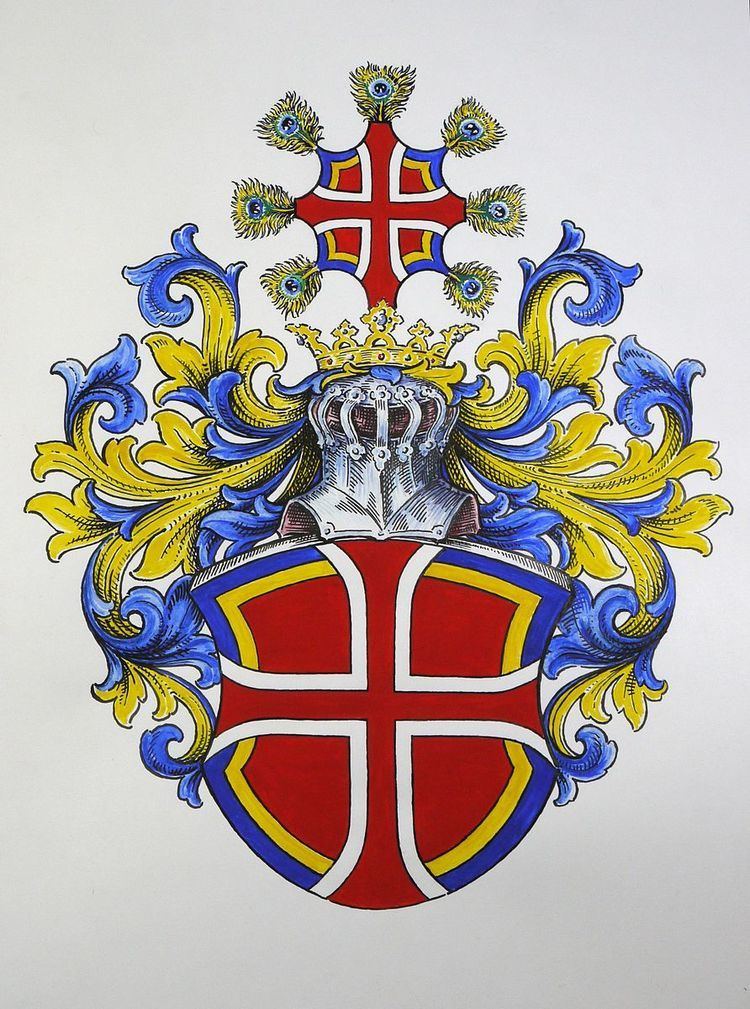 | ||
The Order of the Old Nobility (German: Orden vom alten Adel), also called Order of the Four Emperors (Orden der Vier Römischen Kaiser) or Ancient Order of Saint George (Alter Orden vom St. Georg), is a historic chivalric order, first established in 1308. It was re-founded as a secular community on 6 December 1768 by Count Philipp Ferdinand of Limburg Stirum.
Contents
History
The Order of the Old Nobility was founded by the German king Henry VII, the first from the House of Luxembourg, upon his election in 1308. A hundred years later, his descendant Sigismund, then King od Hungary, established the Catholic Order of the Dragon. In the aftermath of his defeat against the invading Ottoman forces, he aimed at strengthening Christian and knightly virtues and appealed to Saint George for his protection.
With Sigismund's death in 1437, the line of Luxembourg emperors became extinct. When in 1769 Count Philipp Ferdinand re-established the community as a dynastic order of the House of Limburg-Stirum, he also wished to honour the four emperors from the Luxembourg dynasty, namely Henry VII (reigned 1308–1313), Charles IV (1347–1378), Wenceslas (1378–1410), and Sigismund (1410–1437). Twelve commanderies with incomes of 500 gulden were attached to the Order. Knights and Commanders gave at their nomination, a substantial amount of money or a territory as commandery to the Order. They could still enjoy the revenues of such territories, but left it to the Order afterwards.
In 1806 the Lordship of Stirum was mediatized and the counts lost their rule over their estates. The Order was re-organized in 18138, however, Ackermann in his guide, published in 1855, listed it as extinct. Similarly, Archbishop H.E. Cardinale, wrote, that the Order ceased to exist. An examination of the Dutch High Council of Nobility (Hoge Raad van Adel) in 1886 gave the result that the Order is extinct.
During a 1926 convent in Hanover, the Order was again re-organized as the "Ancient Chivalric Order of Saint George called Order of the Four Roman Emperors", then under the governorate of the comital House of Stolberg and the princely House of Liechtenstein. It was relocated to Salzburg, Austria in 1935 after the Nazi seizure of power and finally dissolved during the Austrian Anschluss to Nazi Germany in 1938. Refounded in 1951, it exists up to today and held annual meetings.
Description of the Order
The Order has three grades:
The eight-pointed cross pattée (Maltese cross) is covered with white enamel and in the light blue medallion is a gold representation of St George on his horse, fighting a golden dragon. On the arms are written the letters "H-C-W-S" in gold, in honour of the four Luxembourg emperors. The ribbon is grey-blue with yellow borders.
In Jörg Nimmerguts catalogue another model of Knight cross can be found with flames on the arms of the cross, an Imperial Crown and the letters "P-P-D-E". In the medallion is an angel with a child in the hand.
